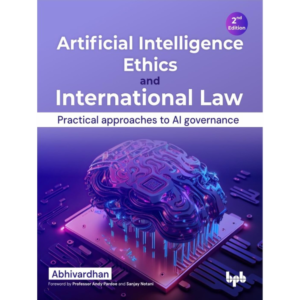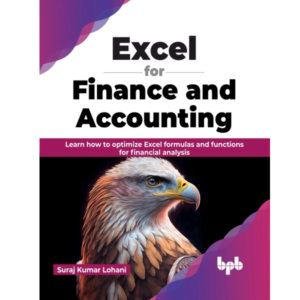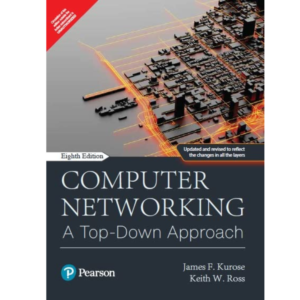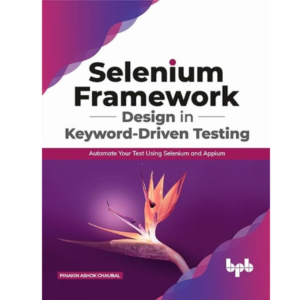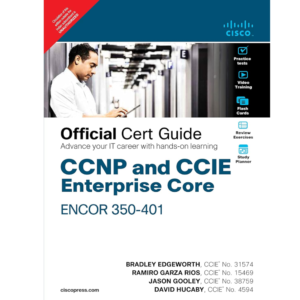FREE SHIPPING WORLDWIDE
Shopping cart (0)
Subtotal: $0.00
Spend $99.00 to get free shipping
Congratulations! You've got free shipping.
Menu
Categories
- Shop
- Arts & Photography
- Biographies
- Business & Money
- Children’s Books
- Comics & Graphic Novels
- Computers & Technology
- Cookbooks, Food & Wine
- Crafts, Hobbies & Home
- Education & Teaching
- Engineering & Transportation
- Fashion
- Health, Fitness & Dieting
- History
- Humor & Entertainment
- Law
- Literature & Fiction
- Medical Books
- Mystery, Thriller & Suspense
- Parenting & Relationships
- Politics & Social Sciences
- Religion & Spirituality
- Romance
- Science & Math
- Science Fiction & Fantasy
- Self – Help
- Sports & Outdoors
- Teen & Young Adult Books
- Text Books
- Travel
- About us
- Contact Us
- Young Adults
- Reference
- Environment
- Test Preparation
- Actions & Adventure
- Research & Publication Guide
- Uncategorized
- Arts & Photography
- Biographies
- Business & Money
- Children's Books
- Comics & Graphic Novels
- Computers & Technology
- Cookbooks, Food & Wine
- Crafts, Hobbies & Home
- Education & Teaching
- Engineering & Transportation
- Fashion
- Health, Fitness & Dieting
- History
- Humor & Entertainment
- Law
- Literature & Fiction
- Medical Books
- Mystery, Thriller & Suspense
- Parenting & Relationships
- Politics & Social Sciences
- Religion & Spirituality
- Romance
- Science & Math
- Science Fiction & Fantasy
- Self - Help
- Sports & Outdoors
- Teen & Young Adult Books
- Text Books
- Travel
We have imported template successfully. To setup it in the correct way please, save this page, refresh and select it in dropdown.
9789355516220, Artificial Intelligence Ethics and International Law: Practical approaches to AI governance – 2nd Edition, Abhivardhan (Author), BPB Publications, Paperback, English, Worldwide
$35.00
Unveiling the future: Navigating AI's Intricate Intersection with International Law – A Journey Beyond Hype and Governance
Key Features
● Comprehensive overview of AI ethics and international law.
● Exploration of pragmatic approaches to AI governance.
● Navigation of global legal dynamics.
● Soft law recommendations for responsible AI development.
Description
Dive into the dynamic realm of AI governance with this groundbreaking book. Offering cutting-edge insights, it explores the intricate intersection of artificial intelligence and international law. Readers gain invaluable perspectives on navigating the evolving AI landscape, understanding global legal dynamics, and delving into the nuances of responsible AI governance. Packed with pragmatic approaches, the book is an essential guide for professionals, policymakers, and scholars seeking a comprehensive understanding of the multifaceted challenges and opportunities presented by AI in the global legal arena.
The book begins by examining the fundamental concepts of AI ethics and its recognition within international law. It then delves into the challenges of governing AI in a rapidly evolving technological landscape, highlighting the need for pragmatic and flexible approaches to AI regulation. Subsequent chapters explore the diverse perspectives on AI classification and recognition, from legal visibility frameworks to the ISAIL Classifications of Artificial Intelligence. The book also examines the far-reaching implications of Artificial General Intelligence (AGI) and digital colonialism, addressing the ethical dilemmas and potential dangers of these emerging technologies.
In conclusion, the book proposes a path toward self-regulation and offers soft law recommendations to guide the responsible development and deployment of AI. It emphasizes the importance of international cooperation and collaboration in addressing the ethical and legal challenges posed by AI, ensuring that AI's transformative power is harnessed for the benefit of all humanity.
What you will learn
● Understand AI's impact on global legal frameworks.
● Navigate complexities of AI governance and responsible practices.
● Explore innovative AI applications and economic dimensions.
● Grasp legal visibility, privacy doctrines, and classification methods.
● Assess the evolution from Narrow AI to AGI and digital colonialism.
● Gain insights into self-regulation and the future of AI.
Who this book is for
This book is tailored for professionals, policymakers, and scholars seeking a comprehensive understanding of AI's intersection with international law. While no specific prerequisites are necessary, a foundational awareness of AI concepts and legal frameworks will enhance the reader's engagement with the material.
Add to cart
Add to Compare
9789355517999, Excel for Finance and Accounting: Learn how to optimize Excel formulas and functions for financial analysis (English Edition), Suraj Kumar Lohani (Author), BPB Publications, Paperback, English, Worldwide
$32.50
Everything you need to know about using Excel for finance and accounting functions
Key Features
● Learn how to create financial models in Excel.
● Explore ways to use Excel functions and formulas for financial calculations.
● Implement advanced Excel techniques for finance and accounting tasks.
Description
Excel is a widely-used tool in finance and accounting, and this book provides a comprehensive guide on how to utilize it for maximum efficiency.
The book covers basic to advanced Excel functions such as data manipulation, financial modeling, and scenario analysis. It also offers practical tips on how to create professional-looking reports, charts, and tables, which are essential in presenting financial data to stakeholders. With Excel's ever-evolving features and functions, it can be challenging for professionals to keep up with its latest updates. This book keeps you updated with the latest Excel features and offers practical examples of how to apply them in finance and accounting. Additionally, it offers tips on how to use Excel to automate repetitive tasks, freeing up more time for strategic analysis and decision-making.
With this book, you can learn to leverage Excel to its full potential and gain a competitive advantage in your roles.
What you will learn
● Learn how to effectively manage financial data in Excel.
● Discover different techniques for preparing financial statements.
● Learn how to perform budget analysis in Excel.
● Learn how to create a forecast in Excel.
● Build dynamic dashboards and reports for financial data.
Who this book is for
For individuals working in finance and accounting positions, whether at an entry-level or in senior management, this book is a must-have. It will enable professionals to enhance their productivity, precision, and effectiveness, resulting in significant savings of time and resources.
Add to cart
Add to Compare
9789356061316, Computer Networking, 8e, Kurose (Author), Pearson Education, Paperback, English, Worldwide
$37.50
The 8th Edition of the popular Computer Networking: A Top Down Approach builds on the authors’ long tradition of teaching this complex subject through a layered approach in a “top-down manner.” The text works its way from the application layer down toward the physical layer, motivating students by exposing them to important concepts early in their study of networking. Focusing on the Internet and the fundamentally important issues of networking, this text provides an excellent foundation for students in computer science and electrical engineering, without requiring extensive knowledge of programming or mathematics. The 8th Edition has been updated to reflect the most important and exciting recent advances in networking, including software-defined networking (SDN) and the rapid adoption of 4G/5G networks and the mobile applications they enable.
Features
A balanced presentation focuses on the Internet as a specific motivating example of a network and also introduces students to protocols in a more theoretical context.
UPDATED - Expanded and significantly updated coverage reflects the swift rise in importance of software-defined networking (SDN) and the rapid adoption of 4G/5G networks and the mobile applications they enable — arguably the most important and exciting advances in networking in decades.
Principles and Practice boxes throughout demonstrate real-world applications of the principles studied.
Case History boxes help tell the story of the history and development of computer networking.
Material on application programming development is included, along with numerous programming assignments.
Add to cart
Add to Compare
9789389328202, Selenium Framework Design in Keyword-Driven Testing: Automate Your Test Using Selenium and Appium (English Edition), Pinakin Ashok Chaubal (Author), BPB Publications, Paperback, English, Worldwide
$33.20
An easy-to-understand guide that will get you acquainted with the core concepts of Selenium WebDriver
Key Features
Add to cart
Add to Compare
- Understand and work with the core concepts of Selenium WebDriver 3.0
- Learn how to design a Keyword driven framework with Database
- Find how to use Build triggers in Jenkins to automate tests
- Learn the process of building a Selenium Framework
- Understand the Keyword Driven Framework concept
- Work with Document Object Model to access page elements
- Integrate Maven and Jenkins with Selenium WebDriver
- Use Selenium Grid to run multiple tests across
9789389423464, Practical Robotics in C++: Build and Program Real Autonomous Robots Using Raspberry Pi, Lloyd Brombach (Author), BPB Publications, Paperback, English, Worldwide
$41.25
Key Features
Add to cart
Add to Compare
- Simplified coverage on fundamentals of building a robot platform.
- Learn to program Raspberry Pi for interacting with hardware.
- Cutting-edge coverage on autonomous motion, mapping, and path planning algorithms for advanced robotics.Description Practical Robotics in C++ teaches the complete spectrum of Robotics, right from the setting up a computer for a robot controller to putting power to the wheel motors. The book brings you the workshop knowledge of the electronics, hardware, and software for building a mobile robot platform. You will learn how to use sensors to detect obstacles, how to train your robot to build itself a map and plan an obstacle-avoiding path, and how to structure your code for modularity and interchangeability with other robot projects. Throughout the book, you can experience the demonstrations of complete coding of robotics with the use of simple and clear C++ programming. In addition, you will explore how to leverage the Raspberry Pi GPIO hardware interface pins and existing libraries to make an incredibly capable machine on the most affordable computer platform ever. What will you learn
- Write code for the motor drive controller.
- Build a Map from Lidar Data.
- Write and implement your own autonomous path-planning algorithm.
- Write code to send path waypoints to the motor drive controller autonomously.
- Get to know more about robot mapping and navigation.Who this book is for This book is most suitable for C++ programmers who have keen interest in robotics and hardware programming. All you need is just a good understanding of C++ programming to get the most out of this book.
9789390531882, CCNP and CCIE Enterprise Core ENCOR 350-401 Official Cert Guide, Bradley Edgeworth | Ramiro Garza Rios | David Hucaby | Jason Gooley (Author), Pearson India, Paperback, English, Worldwide
$41.31
CCNP Enterprise Core ENCOR 300-401 Official Cert Guide is a comprehensive self-study tool for preparing for the new ENCOR exam. Complete coverage of all exam topics as posted on the exam topic blueprint ensures students will arrive at a thorough understanding of what they need to master to succeed on the exam. The book follows a logical organization of the ENCOR exam objectives. Material is presented in a concise manner, focusing on increasing readers' retention and recall of exam topics. Readers will organize their exam preparation through the use of the consistent features in these chapters.
Features
•Pre-chapter quiz – These quizzes allow readers to assess their knowledge of the chapter content and decide how much time to spend on any given section.
•Foundation Topics – These sections make up the majority of the page count, explaining concepts, configurations, with emphasis on the theory and concepts, and with linking the theory to the meaning of the configuration commands.
•Key Topics – Inside the Foundation Topics sections, every figure, table, or list that should absolutely be understood and remembered for the exam is noted with the words “Key Topic” in the margin. This tool allows the reader to quickly review the most important details in each chapter.
•Exam Preparation – This ending section of each chapter includes three additional features for review and study, all designed to help the reader remember the details as well as to get more depth. Readers will be instructed to review key topics from the chapter, complete tables and lists from memory, and define key terms.
•Final Preparation Chapter—This final chapter details a set of tools and a study plan to help readers complete their preparation for the exams.
Add to cart
Add to Compare
Product categories
- Actions & Adventure (1)
- Arts & Photography (3)
- Graphic & Novels (1)
- Biographies (7)
- Business & Money (13)
- Children's Books (5)
- Comics & Graphic Novels (4)
- Computers & Technology (15)
- Cookbooks, Food & Wine (2)
- Crafts, Hobbies & Home (1)
- Education & Teaching (40)
- Engineering & Transportation (19)
- Environment (3)
- Fashion (1)
- Health, Fitness & Dieting (3)
- History (18)
- Humor & Entertainment (1)
- Law (0)
- Literature & Fiction (8)
- Medical Books (17)
- Mystery, Thriller & Suspense (2)
- Parenting & Relationships (1)
- Politics & Social Sciences (23)
- Reference (28)
- Language and Grammar (20)
- Words (3)
- Religion & Spirituality (4)
- Research & Publication Guide (4)
- Romance (0)
- Science & Math (33)
- Science Fiction & Fantasy (3)
- Self - Help (4)
- Sports & Outdoors (0)
- Teen & Young Adult Books (2)
- Test Preparation (13)
- Text Books (47)
- Travel (1)
- Uncategorized (0)
- Young Adults (0)

